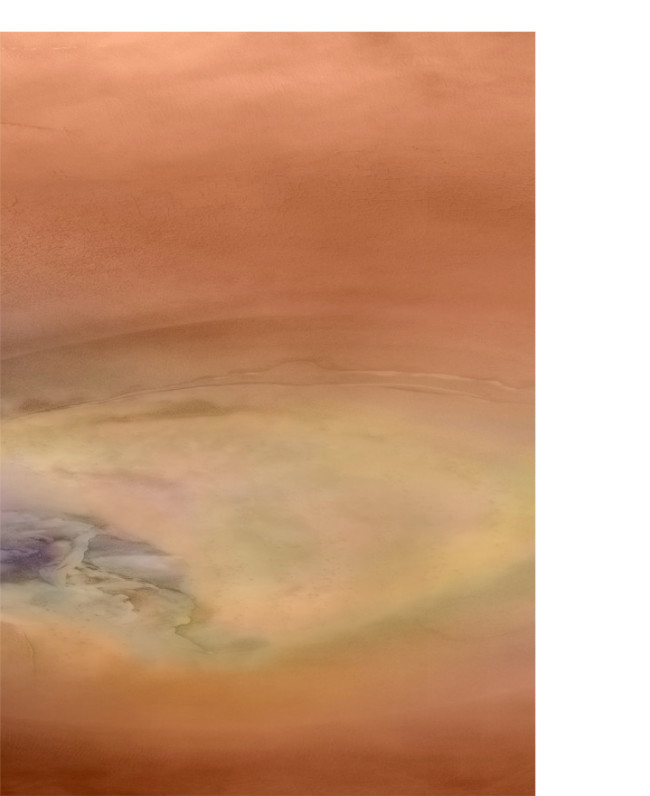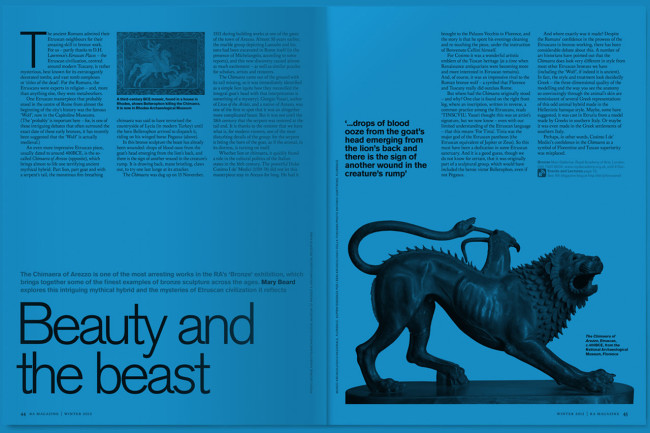10 computers, 2000 hours, one photograph: making pictures with Thomas Ruff
10 computers, 2000 hours, one photograph: making pictures with Thomas Ruff
By Skye Sherwin
Published 28 September 2017
With four decades of his photographs currently showing at Whitechapel Gallery, the artist divulges the hidden world of his virtual darkroom.
-
From the Autumn 2017 issue of RA Magazine, issued quarterly to Friends of the RA.
-
-
Thomas Ruff’s photograms up the ante on those of early 20th-century artists. To execute these camera-less photographs, his forebears such as Man Ray and László Maholy-Nagy placed everyday objects onto photosensitive paper to create black-and-white images. Ruff’s photograms boast a far more complex array of dancing shapes and shadows, and subtle hues of blush pink, violet and green. The crucial difference though is how they are made. Where traditional photograms required actual things with which one could record the imprint from the light, Ruff’s aren’t generated in the real world.
His Dusseldorf studio, a lofty white space designed by Tate Modern’s architects Herzog & de Meuron, whose buildings he has photographed, seems devoid of photography’s traditional apparatus. There are models of his forthcoming retrospective at London’s Whitechapel Gallery, as well as books, artworks and the curios he collects. Photograms, historically, are the most obviously physical photography, yet Ruff’s photograms are made in a virtual darkroom.
Sitting on the veranda, he explains this complex technical process. With the help of 3D imaging expert Wenzel S. Spingler, he designs the objects in his virtual darkroom with the kind of computer software used to produce 3D architectural plans. “We create virtual objects like curved paper, lenses, glasses – any kind of objects I want,” he says. Indeed, working virtually has meant Ruff can defy the laws of physics. “You don’t have gravity, so I can have objects floating around each other. And I project coloured light within the programme, so that the photograms are in colour.” Instead of real photographic paper, there is a virtual piece of paper within the darkroom, on which the objects’ shadows are captured. “The 3D objects are hidden in the final artwork – you only see the shadows they create on the virtual paper. It is the perfect simulation of an old analogue darkroom.” Below, the two images of a work in progress demonstrate the process.

-
-

Screenshots of a work in progress in Thomas Ruff’s virtual darkroom. Computer-generated objects are positioned above digital ‘paper’ (left); when removed images of their ‘shadows’ remain (right)
Courtesy of the artist
-
Ruff has spent his career examining photography’s conventions and what it can – or cannot – say about the world we live in. He emerged as a major figure within the Düsseldorf School of Photography, a group of influential artists that includes his former studio-mate Andreas Gursky, who all studied at the city’s Kunstakademie in the 1980s. Early projects such as Ruff’s own Houses series (1987-91), where Düsseldorf’s blank-faced post-war apartment blocks squat beneath flat grey skies, emphasise the banal. So too with the merciless huge passport-style portraits of his straight-faced, anonymous friends, coolly satirising the fake glow of billboard advertising. “All these genres make a big puzzle that I’m working on: at the end of my life I think I will still be missing a lot of pieces.”
-

Thomas Ruff, Haus Nr.11 III (House Nr.11 III), 1990.

Thomas Ruff, Porträt (P Stadtbäumer), 1988.

Thomas Ruff, nudes lk18, 2000.

Thomas Ruff, press++21.11, 2016.
-
-
Ruff reckons he hasn’t made work using his own cameras since 2003. Instead he has adapted found imagery, from online porn to NASA’s images of Mars. Today he is interested in photography’s tendency to fictionalise in the digital age. “There is no raw, straight photography any more,” he says, referring to the shift from physical film to digital files. The former relied heavily on the material world, with images created by light hitting chemical-coated plastic. The latter records images as long strings of data, which can be manipulated like never before. “When photographers work with the raw digital file, it’s just a source to create their perfect work.” The photograms clearly channel this severance from reality. “In our digital darkroom we create material that doesn’t exist in the real world, such as copper chrome, a virtual metal that makes incredible reflections from the curved forms it covers,” he says. “And we build very complicated objects that you can’t manufacture by hand.” The biggest struggle though was getting the right image quality.
“‘You have to ‘render’ the image,” he continues, referring to the most technically complex aspect of 3D graphics, by which the software’s mathematical approximation of a 3D scene is transformed into a 2D image. “Rendering for 2,000 hours creates a high-resolution image. With a network of ten computers it still took us a couple of weeks to create one work.” As he points out it’s only when he prints that image “that it becomes a photograph”, at least in the conventional sense.
This doesn’t mean that Ruff sees photography as a dying art. “Since the very beginning, photographers used telescopes and microscopes, and made X-rays. Photography is not as limited as people think. Now you have a miserable lens in an iPhone but the software does all the corrections. What is the camera? Is it the software or is it the lens? There is constant change.” He laughs. “I don’t worry about the future of photography.”
Skye Sherwin is a contributor to the Guardian.
Thomas Ruff: Photographs 1979 – 2017 is at Whitechapel Gallery, London, until 21 Jan 2018.

-
-
-
Enjoyed this article?
Become a Friend to receive RA Magazine
As well as free entry to all of our exhibitions, Friends of the RA enjoy one of Britain’s most respected art magazines, delivered directly to your door.
Why not join the club?

-











